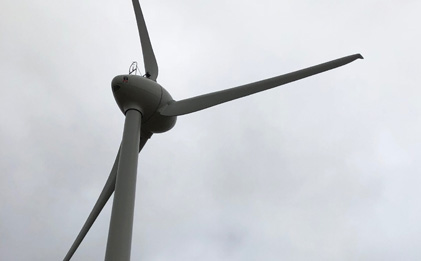Summary
Forecasts for wind generators operating in the National Electricity Market (NEM) have historically been provided by the Australian Wind Energy Forecasting System (AWEFS).
The Australian Energy Market Operator (AEMO) is currently undertaking the Market Participant 5-minute Forecast (MP5F) program that will allow renewable energy generators to provide their own 5-minute ahead forecasts. To improve the quality of 5-minute forecasting capabilities in Australia, ARENA is providing funding to a number of projects.
DNV GL have been delivering renewable energy forecasting services since 2003, and currently forecast for more than 50 GW of projects in 20 countries around the globe. The majority of these forecasts, and all of those currently delivered in Australia, are for half-hourly averaging periods. In some other markets DNV GL already delivers 5-minute averaged forecasts, with good levels of accuracy. The challenge is to implement this service in the Australian market and to improve upon the quality of these forecasts.
The Ararat Wind Farm project, overseen by DNV GL, aims to deliver five-minute forecasting at the Ararat Wind Farm, and to assess the potential of machine learning approaches to further improve accuracy.
Key results
- Forecast accuracy is not necessarily a predictor of FCAS Causer Pay charges. DNV GL observed that Causer Pays factors and charges can be greater for self-forecasts than those expected from the use of AWEFS, even when the accuracy of the self-forecasts is better than AWEFS.
- Financial performance of forecasts is dynamic. It is possible to calculate hypothetical CP charges for historical forecast scenarios, to evaluate the relative financials performance of different forecasts.
- DNV GL created two models – the Refined Model and the CP Optimised Model. Financial evaluations of the various forecast models were undertaken with the Refined Model delivering worse financial outcomes than the AWEFS for certain periods. The CP Optimised Model was found to deliver improved financial outcomes however this was based on generation of historical forecasts.
- Variations in the nature of the electricity market can mean that a forecast model that is performing well at a given time may rapidly cease to offer financial benefits.
Learn more
How the project works
Current forecasting models use both Numerical Weather Prediction (NWP) outputs, and also live data from the operational site, to provide the best possible predictions of wind speed and energy production.
DNV GL has partnered with Ararat Wind Farm Pty Ltd, owned by OPTrust and Partners Group, to provide live data for the Project. DNV GL has also partnered with RES Australia Pty Ltd, the original developers of the wind farm, to provide high level analysis and support to the Project. The Ararat Wind Farm in Western Victoria consists of 75 turbines (supplied by GE) each rated at 3.2 MW to give a total generation capacity of 240 MW. The project has operated since June 2017.
The project is managed through the operating company Ararat Wind Farm Pty Ltd, and the owners will make both live and historical operating data available to assess different forecasting approaches. By using historical “off-line” data to develop and assess techniques, the effectiveness of different approaches will be tested and optimised.
DNV GL’s Forecaster team has demonstrated that machine learning approaches to process NWP data can improve medium to long-term forecasts. After a period of applying the existing forecasting approach to the site, the most promising machine learning solution will be implemented, to explore the extent of possible improvements in forecast accuracy.
Area of innovation
Machine learning is a form of artificial intelligence (AI) that provides systems the ability to automatically learn and improve from experience without being explicitly programmed. Machine learning techniques essentially allow data scientists to ingest data and establish relationships between input and output variables, that can then be used to provide accurate predictions.
In this case, the aim will be to provide both short and medium-term wind generation forecasts of the highest possible accuracy, by integrating machine learning with the existing proven and highly-reliable forecaster service offered by DNV GL.
The machine learning elements of the project will be complemented by the knowledge of design, production, operations and performance issues for wind farms currently possessed by DNV GL and the project partners.
Benefit
Forecasting the production of variable output generators such as wind farms is a key element in managing the contribution of such energy sources to a reliable and least-cost generation system. This project offers the potential to add accurate short time-horizon forecasts to the existing system which can accurately forecast production out to 24 hours or more.
This offers the potential benefits of both short-term forecasting which can assist in managing reserves and ancillary services to maintain system reliability, and also for medium-term forecasting which can assist with scheduling generation day-ahead, and also scheduling maintenance activities for the project to minimise lost energy (i.e. so that maintenance can be undertaken when the wind is forecast to be low).
Additional impacts
This project will demonstrate DNV GL’s capabilities to provide forecasting services in Australia and develop solutions for short-term forecasting using local expertise.
Data on performance of the forecaster solution in Australia will add to local participant understanding of the accuracy levels and value which can be added to wind projects from accurate forecasting.







